Marriott Bonvoy is the world’s largest hotel loyalty program and one that’s most easily accessible to Canadians who wish to unlock free hotel nights and elevated status benefits during their stays around the world.
It’s far and away my first-choice hotel program, but that doesn’t mean it’s perfect, either. In this post, with one week left to go on the first-ever 25% transfer bonus from Amex MR to Marriott Bonvoy, I wanted to share with you nine things I like and dislike about Marriott Bonvoy to help you understand the many benefits of the program, but also some of the frustrations that you’ll probably face when you go about earning and redeeming Bonvoy points for stays at Marriott properties.
In This Post
- Like: Many Ways to Earn Points
- Like: Easy Elite Qualification
- Like: Generous Elite Treatment
- Like: Aspirational and Budget Awards
- Like: 40+ Airline Transfer Partners
- Dislike: Poor Redemption Value at Popular Hotels
- Dislike: Inconsistent Brand Standards
- Dislike: Suite Night Awards
- Dislike: Lack of Differentiation Above Platinum Elite
- Conclusion
Like: Many Ways to Earn Points
A big part of what makes Marriott Bonvoy so attractive is the abundance of avenues for racking up a meaningful points balance in a relatively short period of time.
The program offers several co-branded credit cards on both sides of the border. Here in Canada, there’s the American Express Marriott Bonvoy Card and American Express Marriott Bonvoy Business Card, which both offer 50,000–51,000 Bonvoy points as a signup bonus upon spending $1,500–3,000 in the first three months (the exact offer depends on whether you apply through the public offer or a refer-a-friend link).

Likewise, in the US, the Amex US Marriott Bonvoy Brilliant and Amex US Marriott Bonvoy Business both have signup bonuses of 75,000 Bonvoy points, and there’s always a chance that they’ll return to their historical high offers of 100,000 Bonvoy points as well.
(And as we’ll discuss below, getting the US-issued Bonvoy cards will be a key piece of the puzzle if you wish to participate meaningfully in Marriott Bonvoy’s elite status program in the long run.)
Then there’s the fact that American Express MR points and MR Select points can be transferred to Marriott Bonvoy in unlimited quantities at a 1:1.2 ratio (bumped up to 1:1.5 for the month of September 2020). While regular MR points could potentially unlock higher value through airline transfers, MR Select points are often best redeemed through a Marriott Bonvoy transfer, and they’re certainly not hard to come by with the unique Cobalt Card offering 5x points on food, drinks, and any retailer’s gift card you can buy at your grocery store.
Throw in Marriott’s frequent promotions on paid stays – which may not always be the most exciting, but do add up over time – and the program’s ease of earning points is one of its key strengths.
Like: Easy Elite Qualification
Some would argue too easy.
The entry-level Silver Elite tier is given away simply by being a co-branded cardholder, while the next level up, Gold Elite, is given away simply by holding either the American Express Platinum Card or the American Express Business Platinum Card.
Meanwhile, Marriott Bonvoy’s most meaningful elite benefits begin at the Platinum Elite level, which require 50 elite qualifying nights to achieve every year.
However, there’s a major shortcut to this 50-night threshold: by holding both a US-issued personal co-branded card and a US-issued business co-branded card, the perk of 15 elite qualifying nights on each card will stack with each other, resulting in a total of 30 elite qualifying nights.
This is the only valid combination of co-branded cards that will allow you to double-up on your 15 nights. No other combination will work; in particular, none of the Canadian-issued cards enter the mix in any way for the purposes of stacking elite nights to reach 30.
Since this question keeps coming up again and again, here’s a handy chart to illustrate:
If you hold the following combination of Marriott Bonvoy co-branded credit cards... | You will receive... |
Canadian personal + Canadian business | 15 elite qualifying nights |
Canadian personal + US personal | 15 elite qualifying nights |
Canadian personal + US business | 15 elite qualifying nights |
Canadian business + US personal | 15 elite qualifying nights |
Canadian business + US business | 15 elite qualifying nights |
US personal + US business | 30 elite qualifying nights |
Amex US Bonvoy Brilliant + US business | 40 elite qualifying nights |
By putting in a little bit of legwork and getting yourself set up with the personal and business co-branded cards in the US, you end up in a position where you only need 20 “real” elite qualifying nights every year to qualify for and renew Platinum Elite status, year after year.
That’s a threshold that most dedicated travellers, even those with limited vacation time, should be able to achieve – especially if you leverage “mattress runs” at Category 1 hotels to top-up the difference if needed.
Like: Generous Elite Treatment
Armed with Platinum Elite status or higher, you can almost always count on receiving a pretty good experience at your Marriott hotel stay.
While I do have some qualms with the consistency of this elite treatment across Marriott’s 30+ hotel brands (which I’ll discuss below), I’m pretty happy with Marriott’s elite treatment in general, and I’ve found that my relationship with the Marriott brand, which originated purely as a means to ruthlessly extract free nights from its loyalty program, has become one of… actual loyalty.
At the majority of Marriott’s hotels, Platinum Elites and above can expect a good chance at a room or suite upgrade, a decent breakfast in the mornings, and perhaps an exclusive lounge to catch up on work or unwind with a beverage in the evenings. Over time, that consistency in the hotel experience is something I’ve come to highly value when I’m travelling.
However, not all of the generosity comes automatically – sometimes you’ll need to coax the hotel into treating you generously. Because upgrades are given to elite members on a discretionary basis, the importance of learning to “suite-talk” your hotel into giving you a nice upgrade cannot be understated.
I recommend familiarizing yourself with the Marriott chat app and giving your best shot at suite-talking whenever you get a chance – even when you don’t really care about getting an upgrade, such as during a quick overnight stay at an airport hotel. Those efforts will pay off eventually when you’re able to swing an epic two-bedroom villa in Bali or a WOW Suite at the W.
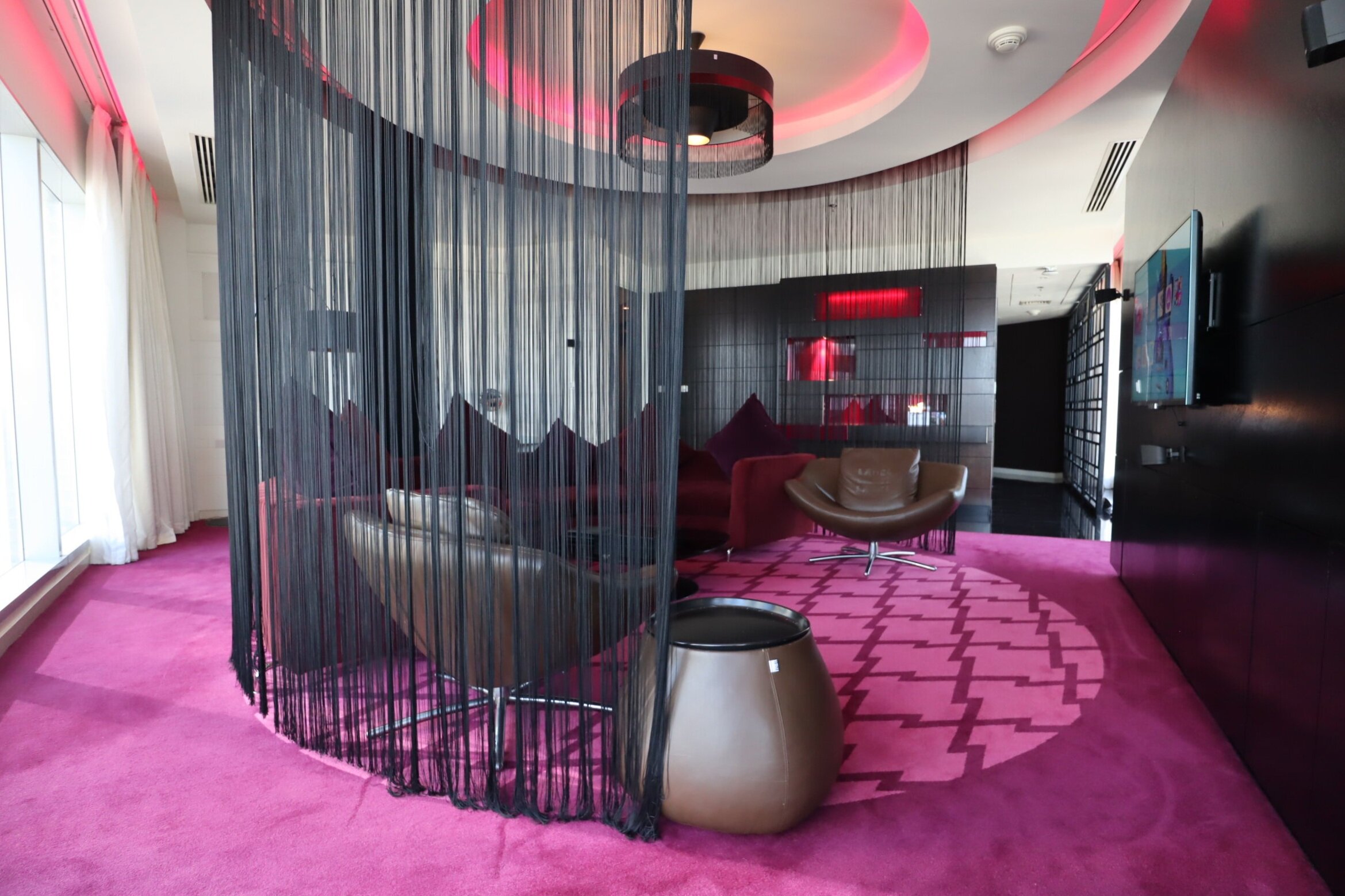
WOW Suite, W Doha
Like: Aspirational and Budget Awards
On the award redemption side, I’m very enticed by Marriott’s very wide range of aspirational luxury hotels, which I find to be a significant step above its peers.
With no less than seven luxury resorts in the Maldives expected by 2021, two in Bora Bora, and several other gems littered across the portfolio (such as Mystique Santorini, Al Maha Desert Resort Dubai, St. Regis Bali, or W Verbier), there’s no shortage of redemption options that promise to be truly exceptional stays, especially if you use Bonvoy points to book at an excellent value (perhaps with the fifth night free thrown in!) compared to the cash rates.
Even outside of the stunning resorts by the ocean, in the desert, or up in the mountains, the consistently high quality of Marriott’s top brands, such as JW Marriott or St. Regis, give me a lot to look forward to when I’m travelling to less popular places around the world – such as the extremely opulent, but very affordable, Category 5 St. Regis Astana and Category 4 Ritz-Carlton, Almaty in Kazakhstan.
Thanks to its strength on the luxury side, Marriott Bonvoy is a program that allows me to dream as a traveller, and that’s a big part of what loyalty programs are all about.
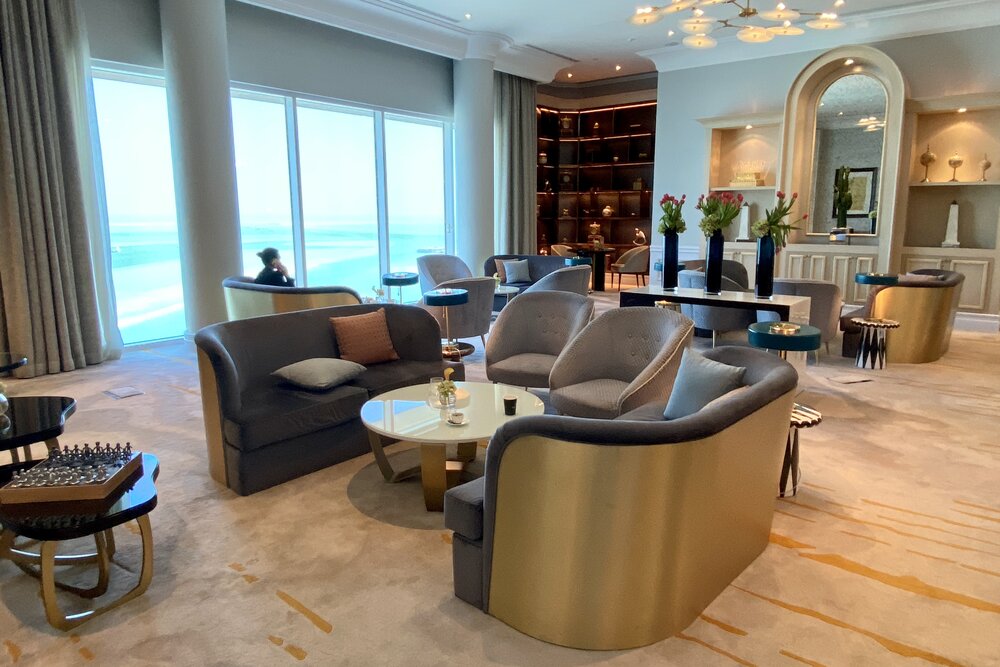
Club Lounge, The Ritz-Carlton, Doha
In addition, however, there’s often excellent value on the opposite side of the spectrum as well, for travellers who are more frugal in their travel style. Category 1 and 2 hotels around the world are often an excellent deal compared to the cash rates as well, especially in emerging markets like Africa, India, China, or South East Asia.
A budget-conscious traveller might decide to book Airbnbs or couch-surfing on many of their trips, but by collecting Marriott Bonvoy points just like everyone else, they’d still be able to redeem for the lower-category hotels when it makes sense, unlocking a hotel stay of reliable quality without parting ways with huge sums of points at a time.
Like: 40+ Airline Transfer Partners
With most hotel rewards programs, there’s no major purpose to collecting points if you don’t frequently stay at hotels in the first place. That’s not the case with Marriott Bonvoy, which has 40+ airline partners that you can transfer your points to.
The standard transfer ratio is 3:1 to most airline programs, although Marriott will give you a bonus if you transfer points in chunks of 60,000, meaning that the optimal transfer ratio is 60,000 Marriott Bonvoy points = 25,000 airline miles.
You can refer to this post for an in-depth list of the best airline transfer sweet spots. There are multiple strategies you can pursue: either consolidating points into a program where you can already earn meaningful balances through other avenues, such as Aeroplan or Alaska, or use Bonvoy to access the more niche award programs like Korean Air SKYPASS or Turkish Airlines Miles & Smiles that nevertheless have their own sweet spots worth pursuing as well.
Dislike: Poor Redemption Value at Popular Hotels
Now let’s talk about what I dislike about Marriott Bonvoy. My biggest gripe with the program is the relatively poor redemption value outside of the two extremes we discussed above.
Yes, if you like to pursue luxury redemptions with sky-high cash rates, or are willing to stick to the lowest tier of hotel redemptions, then you’ll pretty consistently derive value from your Marriott Bonvoy points.
But if you simply want to redeem points for a free night while travelling where “most people” like to travel – like major cities in North America or Europe, or popular sun destinations such as Hawaii – then the value in redeeming points has been diluted over the past few years, and is only getting worse with every year’s devaluation category adjustments.
Even though I like staying at my fair share of luxury properties, I very often find myself in a major North American city and would be happy with any mid-to-upper-range hotel, like a Marriott or a Renaissance, for a few nights.
Invariably, I’ll find myself in a bit of a dilemma: the cash rates are usually in the range of $250–300, which is a hefty sum for what isn’t likely to be a special experience in any way, but Bonvoy wants to charge me something like 50,000 points for a Category 6 hotel.
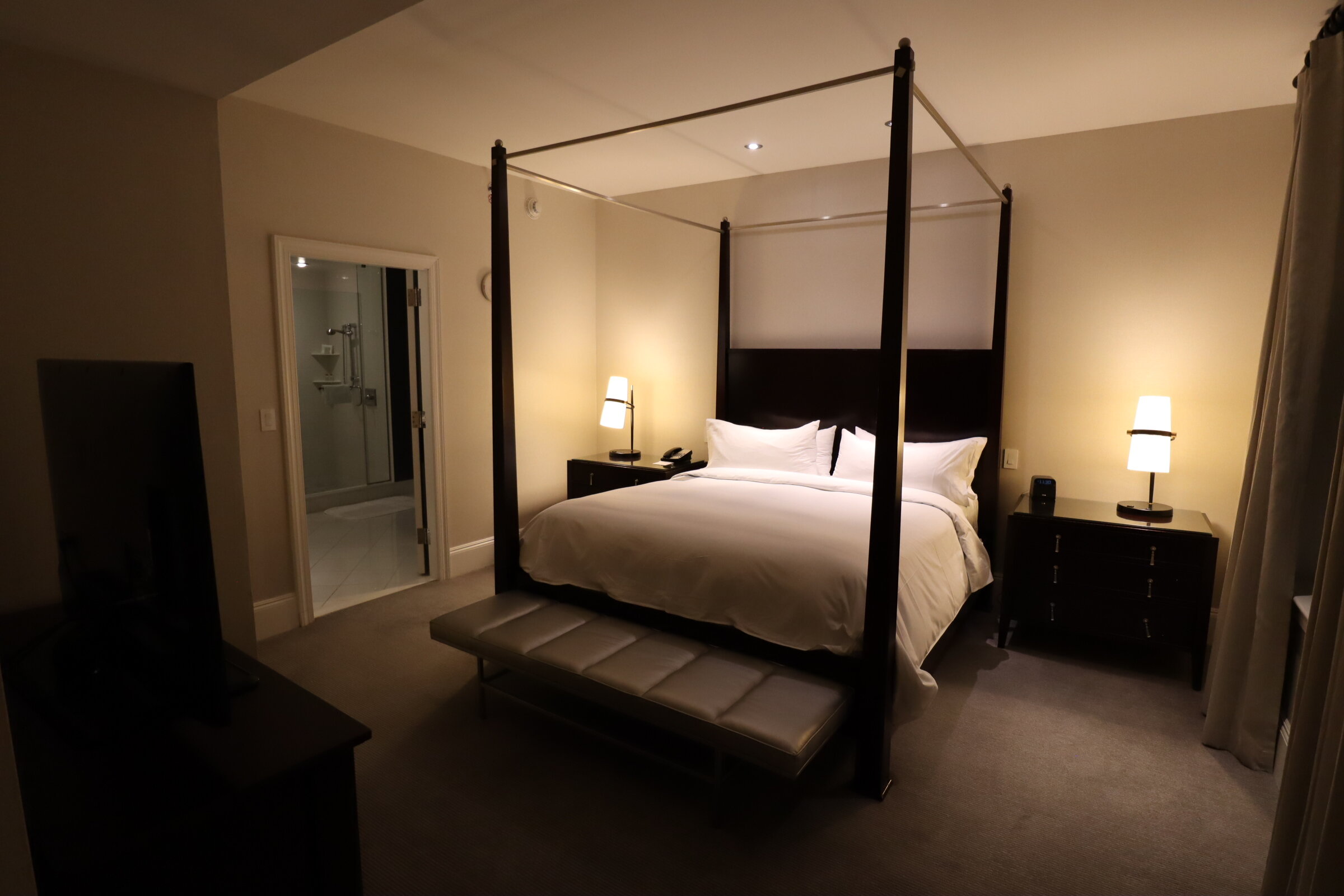
Renaissance Providence Downtown, where I paid US$200+ per night because redeeming points didn’t make sense.
Of course, I don’t want to pay $250–300 per night, but then I start thinking about all of the actually special travel experiences that 50,000 Bonvoy points could unlock alternatively, and so that’s when I begin searching for methods to lower the cash rate as much as possible and then bite the bullet and pay.
The unpredictability in peak and off-peak rates adds another layer of frustration: the determination of peak and off-peak dates are not disclosed by the program, are subject to change on a monthly basis, and only balance each other out across the local portfolio as a whole, rather than within each individual hotel’s calendar.
This means that a single hotel could conceivably get away with charging peak rates on most dates throughout the year, and indeed, many Marriott hotels do exactly that.
Yes, these instances may be offset by off-peak rates at hotels elsewhere, but a lack of predictability and transparency will always be a major downside to any loyalty program – especially when it compounds the already poor redemption value in the more popular destinations.
Dislike: Inconsistent Brand Standards
Another major annoyance of mine with Marriott hotels is the inconsistency in brand standards across Marriott’s 30+ hotel brands. Without spending time studying the program in excruciating detail, it’s virtually impossible to understand exactly what elite benefits you can expect at each individual brand as a member with Platinum Elite or higher status.
At JW Marriotts, Marriotts, and Sheratons, you’re supposed to get breakfast as part of your lounge access, and the choice between 1,000 points or a $10 food and beverage voucher as your elite welcome gift. Meanwhile, at St. Regises, Luxury Collections, and Ws, you’re supposed to get breakfast as one of your choices for your elite welcome gift (the other choice being 1,000 points). Ritz-Carltons and EDITIONs aren’t obligated to feed you in the mornings – but some still do, like the Ritz-Carlton, Kyoto or the Bodrum EDITION.
Those are just the basic rules, upon which there’s an ever-more-granular set of exclusions, restrictions, and compensations based on where the property is located, whether or not it’s a resort property, what happens if the lounge is closed, and so on and so forth. It’s a highly convoluted and impractical basis on which to offer elite benefits, if you ask me.

(If you are interested in getting your Ph.D. in the brand standards of Marriott hotels, I invite you to bookmark this comprehensive PDF file by LoyaltyLobby, so that you can refer back when you’re trying to remember whether or not you receive breakfast at a Sheraton resort in South America where the lounge is closed.)
It’s understandable that this state of affairs is mostly the legacy of the merger between Marriott Rewards and Starwood Preferred Guest (SPG) in 2018, but I certainly would’ve expected Marriott Bonvoy to make the elite benefits more uniform by now, and I’m hoping it’ll be one of the more pressing items on Marriott’s agenda when we see the post-pandemic travel recovery taking shape.
Dislike: Suite Night Awards
Upon reaching the thresholds of 50 and 75 elite qualifying nights every year (and thereby achieving or renewing Platinum Elite or Titanium Elite status), Marriott Bonvoy members may choose a set of five Suite Night Awards as their Annual Choice Benefit.
Frankly, though, I think the Suite Night Awards are a bit of a letdown, and I don’t think I’m alone in feeling this way.
In theory, suite upgrade instruments are a very attractive benefit in a frequent-guest loyalty program, but the fact that Suite Night Awards can only be requested five days in advance, rather than guaranteed, removes a huge chunk of their utility to me.
It’s not like there’s any other way you could possibly request a suite upgrade, right? Oh wait, you can just nicely ask for them, and that strategy alone pays off a majority of the time!
I’ve used Suite Night Awards on many occasions in the past – at the Hôtel de Berri Paris, Andaman Langkawi, and W Shanghai The Bund to name a few – and in those instances, my requests all cleared five days in advance. To me, it was convenient to be able to confirm a suite upgrade in advance so that I didn’t have to ask the hotel for one over the chat app, but in general, I’d be pretty confident of getting these upgrades over the chat app anyway.
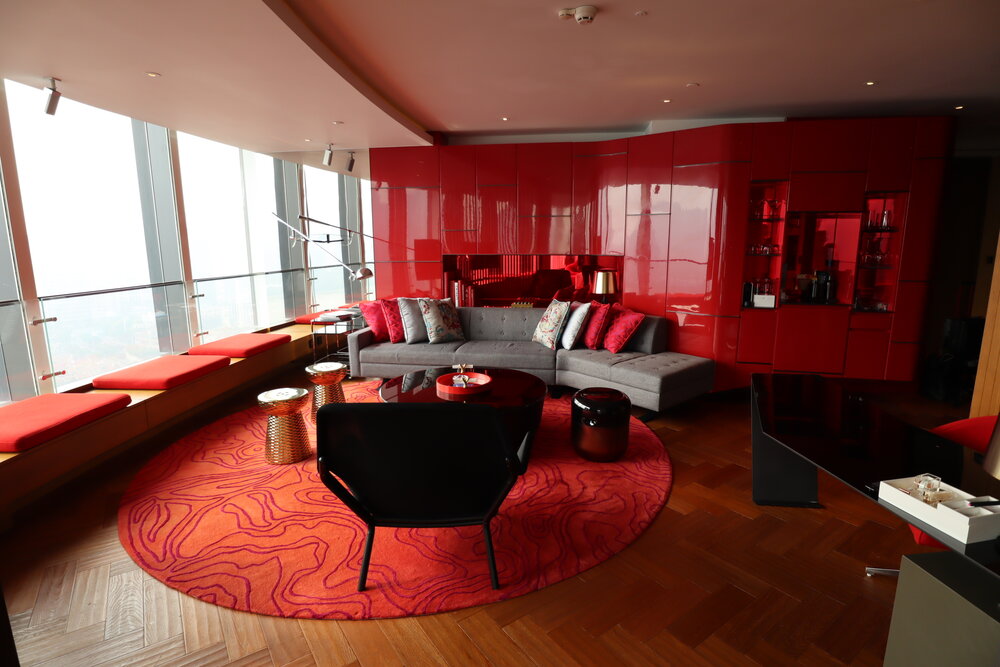
However, recently I was hoping to that my parents to a stay in the very same Fantastic Bund View Suite I had received at the W Shanghai The Bund – and for the first time, I experienced what it was like to have a Suite Night Award request denied. And I must say, there’s nothing quite like a denied Suite Night Award that leaves an elite member feeling unvalued.
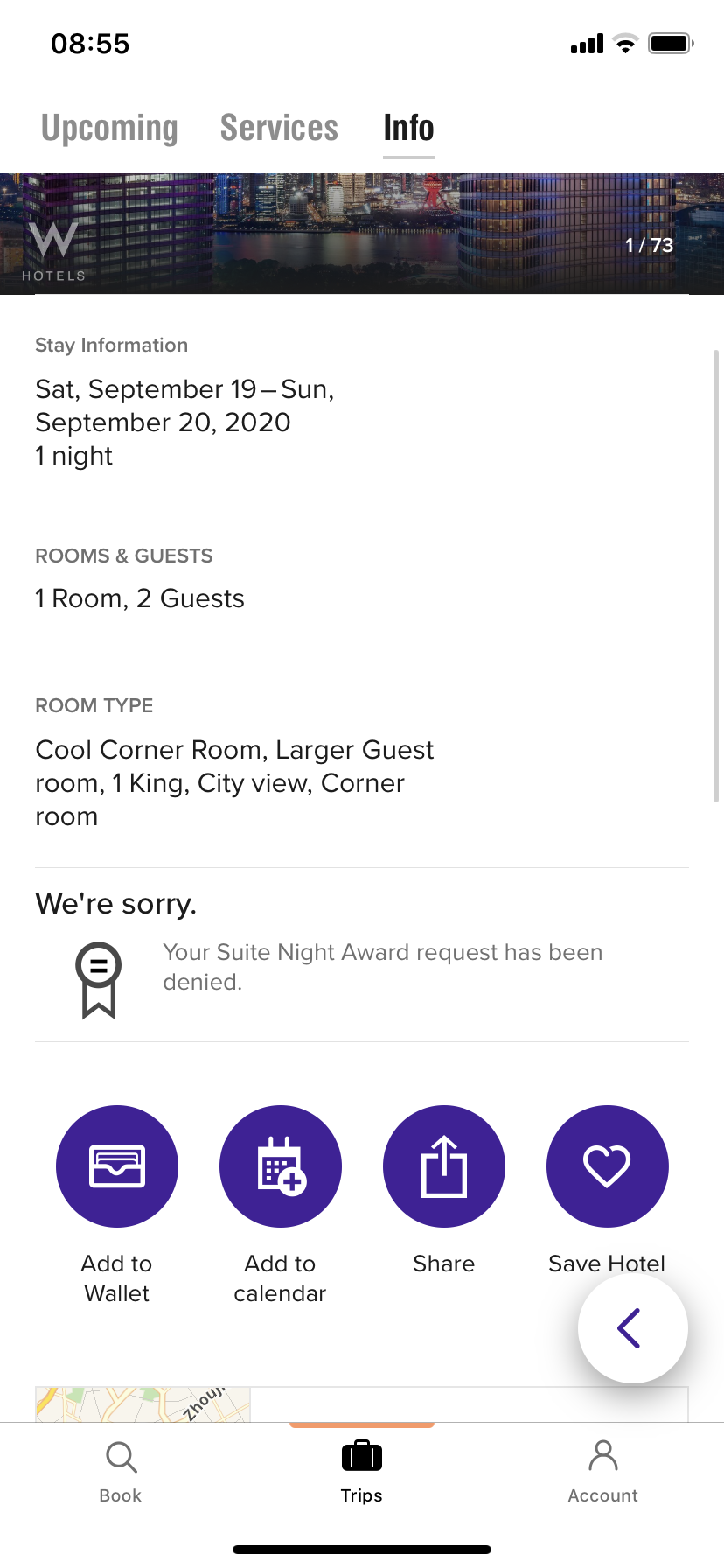
Ultimately, I still find Suite Night Awards valuable to a certain degree, as they’re another instrument I can use to boost my chances at a suite upgrade if I really care about one.
However, I can’t help but feel that Marriott Bonvoy was somewhat half-hearted in offering this benefit, and the elite program as a whole would receive a major boost if the Suite Night Awards were confirmable in advance instead.
Dislike: Lack of Differentiation Above Platinum Elite
Finally, while the elite benefits at Platinum Elite are quite meaningful, I do feel that there’s minimal differentiation at the Titanium Elite and Ambassador Elite levels.
As we saw in our respective valuations of Platinum Elite and Titanium Elite, the incremental benefits upon reaching the 75-night Titanium Elite level is limited to:
- A free night award worth 40,000 points as an Annual Choice Benefit
- Reciprocal Silver status with United Airlines
- Eligibility for suite upgrades at Ritz-Carlton hotels
Beyond that, the benefits of being Titanium are mostly circumstantial: in theory, you’re supposed to have higher priority than Platinums when it comes to things like suite upgrades, but these are not written in the rules and are never guaranteed.
Similarly, Ambassador Elite members who’ve reached 100 elite qualifying nights and spent US$20,000 with Marriott over the past year are rewarded with only a personalized ambassador service to assist them along their travels – a service that has undergone significant cost-cutting recently and whose standards have, by all accounts, slipped a long way since the legacy SPG days.
As discussed above, Marriott made it much easier to qualify for Platinum Elite this year thanks to the ability to stack 30 elite nights from the US-issued co-branded credit cards. With the ranks of Platinum Elite members likely to swell in the future, it’s even more important for the higher tiers to be sufficiently differentiated in order to reward members who demonstrate loyalty above and beyond picking up two credit cards and then staying 20 nights.
I’ve tossed a few ideas around before, but additional meaningful benefits for Titaniums and Ambassadors would go a long way towards strengthening Bonvoy even further. These benefits could even address the program’s other weaknesses at the same time – for example, if top-tier members were offered perks like free breakfast at Ritz-Carltons and EDITIONs or access to instantly-confirmable suite upgrades.
Conclusion
It’s no secret that Marriott Bonvoy is my favourite hotel loyalty program thanks to its strong global footprint, ease of earning points here in Canada, generous elite qualification and benefits, wide range of luxury properties that catch my eye for an upcoming redemption, and unrivalled flexibility in offering 40+ airline transfer partners.
At the same time, however, there are genuine weaknesses in the program that may diminish its utility for certain types of travellers. While the program does a good job of complementing higher- and lower-end travel styles, it doesn’t offer the best value to the “average” traveller; moreover, the elite program could be shored up in many different ways, from improved uniformity in brand standards to more differentiated perks at the higher levels.
I’d love to hear about what you like and dislike about the program too, so feel free to share your perspective on what you’ve found to be strong or weak in your experience with Marriott Bonvoy.




















Great analysis as always Ricky. In the US it seems Marriott constantly gets a bad rap by bloggers and points and miles gurus, as Hyatt reigns supreme here with their strong partnership with Chase and reasonable redemption rates. I would argue that Marriott’s strength is in their cheap cash rates along with their treatment of mid-tier elites. I will take having a choice of many different Marriotts over 1 or 2 Hyatt’s any day.
Hyatt also has been known to play games with award availability, effectively blocking out dates. (although the terms say no blackout dates) I have consistently seen no award rooms available during a busy convention or holiday week, whereas Marriott always tended to have rooms available. (albeit more points required)
Ricky, I am wondering do you redeem pts for airline miles? and how does Marriott compare to Hilton’s ecosystem in Canada? The common sentiment seems to be status at Hilton is neer meaningless since so many people have the aspire card here in the states.
Appreciate the Marriott love as always
You mentioned the US-based Amex offerings, but not the Chase ones? The Chase Marriott Bonvoy Boundless has enjoyed a 100,000 point sign-up bonus since near the end of July. https://www.doctorofcredit.com/chase-marriott-bonvoy-boundless-100000-point-offer-returns/
The lack of differentiation between Titanium and Ambassador is foolish on Marriott’s part in my opinion. This is because I have absolutely no incentive to meet the $20k/yr spend threshold and as a result, many of my Marriott stays are points and certificate redemptions. After hitting 75 nights, I prefer to spend my cash at non-Marriott affiliated Design Hotels and more recently, SLH hotels. There are some really unique properties between the two brands and they tend to offer a more memorable experience. Most of these stays include breakfast and also I’ve been fortunate enough to get upgraded quite often. By not offering meaningful benefits above Titanium, Marriott is effectively driving me to spend my cash at boutique brands.
When you talk about suite upgrades, are you expecting them to be completely complimentary (I.e., free)?
Absolutely. Free on the basis of elite status. It’s not something I’d usually pay for, since no one really *needs* a suite when they’re travelling after all.
Thanks for the reply!
As yourself, I have been very fortunate to have all my SNAs clear, except in one incidence (Str. Florence on a Sunday in summer). Fortunately upon check-in discovered I was upgraded to that particular suite, so I avoided that experience of feeling unvalued. But I dread the day of denial.
Lucky you. In my case I was certainly not about to treat my parents to the W if they were only going to get the Cool Corner Room! Thankfully they really enjoyed the Waldorf on the Bund instead.
Wonderful! Glad to hear they enjoyed it, looks like an impressive property.
It’ll be interesting to see the landscape when the rumoured merger of Accor and IHG were to happen, creating world’s largest hotel group.
If that happens, they’d really need to ramp up their loyalty offering, as the way things stand we’d end up with the world’s largest and most uninspiring hotel loyalty program at the same time.
Some great info for evaluating the realities of the Bonvoy program. One other benefit I didn’t see was the 5th night free on points redemptions. I always try to maximize with 5 day redemptions when I can.
Very true Scott, I always aim for the same thing. I’ve added a mention of that to the section on redemptions, cheers.
Feel the exact same way, only wish we had a Hyatt credit card in Canada to make being less loyal to Marriott a little easier ;P
Currently forcing myself to aim for Titanium this year just to get out of the increasingly easy to reach Platinum pool,and it’s not a good feeling :(. Really hoping for strong action from Bonvoy post-Covid!
Personally I don’t see the Hyatt card coming into Canada because there are only like 12(?) Hyatt properties in Canada. I just wish AMEX offers a premium Marriott card because Cat 5 anniversary night are getting harder and harder to use. (Less properties to use in general and even harder to use to get an outsized value) Also would welcome the ability for Canadian business credit cards to get 15 elite credits like our brothers do south of the border.
But I think in order for these changes to happen we need more competition in hotel credit cards offered in Canada. Marriott is pretty much the only hotel CC provided in Canada (excluding Best Western because doesn’t offer FNA certs) so they have no reason to one up another program. With travel industry heavily being impacted by COVID-19, hopefully hotels look at generating other sources of revenue (from credit cards) and improving the meta of the game we play here.
Even one of the Amex Hilton cards from the US coming up north would change things up significantly. Hell, I’d welcome Capital One and their IHG card back in a heartbeat.
Good news is that I imagine it isn’t too hard to get to Titanium these days, with the 30 credit card nights + the big bonus we all got a few months back.
Free breakfast is the most important perk for me. For that reason, Hilton Gold through Amex Canada’s Platinum Card is enough for me to wish Marriott “Bonvoy” and enjoy status with Hilton